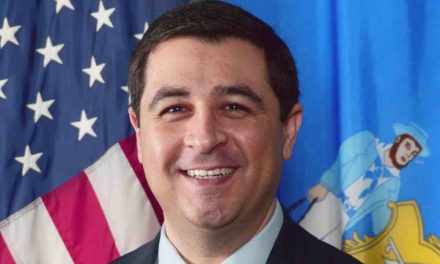
Wisconsin hospitals’ community outreach efforts total $1.7 billion
Hospitals provide $328 million in charity care; lose nearly a billion on Medicaid
MADISON (October 8, 2014) —— Wisconsin hospitals provided $1.78 billion in 2013 on programs that benefitted the community, ranging from free care for those unable to pay their bills, to outreach activities related to health education, free screenings and community support groups.
Hospitals also reported they incurred nearly a billion dollars in losses ($967 million) associated with caring for patients in the Medicaid program. Medicaid pays hospitals only about 65 percent of what it costs to care for this vulnerable, and often medically-complex, patient population.
The Wisconsin Hospital Association (WHA) surveys its 135 member hospitals and health systems annually and asks them to describe and quantify the programs, services and activities they provide at or below cost, solely because those programs fulfill a health need in the community. (See report: http://www.wha.org/pubarchive/
“Whether it is providing financial assistance to patients with limited resources through charity care programs, or improving access to essential or primary health care services by sponsoring free medical and dental clinics, Wisconsin hospitals provide a ‘safety net’ of care in the communities they serve,” according to WHA Executive Vice President Eric Borgerding. “Without that care in place, state and local government would have a much greater burden in trying to deliver these essential services to a vulnerable population.”
While the $328 million in charity care hospitals reported in 2013 was fairly close to 2012, the number of patient encounters that qualified for free care rose dramatically. In 2013, hospitals reported 1.4 million instances of charity care, compared to 1.2 million in 2012.
“Charity care can vary from year to year, depending on the types of cases that qualify,” according to WHA Senior Vice President Brian Potter. “The fact that there were 200,000 more instances of free care in hospitals in 2013 than the previous year, yet the dollar value of that care stayed fairly even with past years, may reflect the fact that more services are provided in the less costly outpatient setting than in the hospital, which is consistent with what we are seeing with all patient care.”
In 2013, hospitals reported they were unable to collect $276 million in hospital costs. Anecdotally, hospitals attributed the nearly $6 million increase in bad debt over 2012 figures, in part, to the increase in deductibles and co-pays.
“While more people may be gaining coverage, we are still seeing many patients struggle to meet their co-pays and deductibles,” Potter said. “That is a real and growing concern for hospitals.”
Hospitals Absorb Nearly $13 Million Loss Operating Nursing Homes
Keeping those who are elderly or in need of rehabilitation services in the community is one of the most valued and necessary services requested by their families and friends. In some communities, hospitals are the sole providers of those services. In 2013, the hospitals that operated nursing homes reported losses totaling $13 million. Hospice care is also becoming increasing more available because hospitals recognize the value of end-of-live services for their patients and families. Hospitals typically report hospice services are operated at a loss.
Wisconsin hospitals offer thousands of access points in their communities to services as wide ranging as medical care at a free or reduced-fee medical clinic, to health screenings at health fairs, schools and other public events. By offering free health screenings and other medical services closer to where people shop, work or play, hospitals live out their missions to raise the health status of people living in their communities.
2013: A Transition Year in Hospital Community Benefit Planning and Implementation
The heart of every hospital and health system mission has been and continues to be to improve population health. In 2013, under a new requirement of the Affordable Care Act, hospitals were required to complete a formal community health needs assessment (CHNA) in partnership with public health and other community partners to assess, address and prioritize community health needs. The UW Population Health Institute (UWPHI) collected the CHNAs and implementation plans and created a new website www.improvingwihealth.org that displays this information on every hospital and health department in the state. The researchers also analyzed local health department (LHD) community health improvement plans, conducted by local health departments under provisions of Wisconsin state law. Where available, UWPHI also captured snapshots of the specific strategies, tactics and programs being deployed or planned in communities to drive improvement in these health priority areas.
“This new web-based resource is designed to help those working on common challenges across the state to connect with each other, share ideas and accelerate progress,” according to UWPHI Director Karen Timberlake.
Visit www.wiServePoint.org to review the 2014 WHA Community Benefits Report. It also has patient stories and descriptions of free and reduced cost services that hospitals provide in their communities.





